Black-headed Grosbeak
Order: Passeriformes
Family: Cardinalidae
Genus: Pheucticus
Species: melanocephalus
**Audio Below**
Description
-
Length: 8.25"
-
Wing span: 12.5"
-
Weight: 1.6oz (45 grams)
-
Stocky medium sized orange & black songbird
-
large, thick, bicolored, cone-shaped bill
-
White flash on wings in flight with yellow inner linings
-
Breeding males are striking colors of bright orange, black with some yellow on lower belly
-
Females and all juveniles are streaked brown and white with some light orange and yellow on chest and belly. Females have more pink on their bill than the juveniles **Females: last five photos to the right
-
Juvenile males have less streaking and more bright orange on their chest than adult females
Factoids:
- A common and familiar bird of the American West, the Black-headed Grosbeak can be found in mountain forests, along desert streams, or in backyards and gardens. The male and female differ greatly in their plumage, with the male being a flashy black, white, and cinnamon, and the female a drab buff and brown
- Despite his showy plumage, the male Black-headed Grosbeak shares about equally with the female in incubating eggs and feeding young
- The nest of the Black-headed Grosbeak is widely reported to be so thinly constructed that eggs can be seen through bottom. However, nests are less thin in northern California. Thin nests may provide ventilation and help keep them cool
- The female Black-headed Grosbeak commonly sings. The female song is generally a simplified version of the male song. Occasionally, the female sings full "male" song, apparently to deceive its mate about the presence of intruders and force him to spend more time at the nest
- The male Black-headed Grosbeak does not get its adult breeding plumage until it is two years old. First-year males can vary from looking like a female to looking nearly like an adult male. Only yearling males that most closely resemble adult males are able to defend a territory and attempt to breed
All photographs and audio clips are ©Jamie Mullin 2006
Sources: Cornell Lab of Ornithology & The Sibley Guide to Birds.
 |
|---|
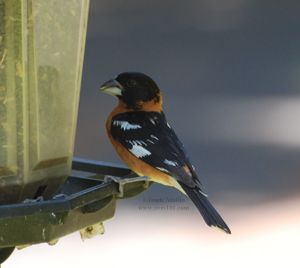 |
 |
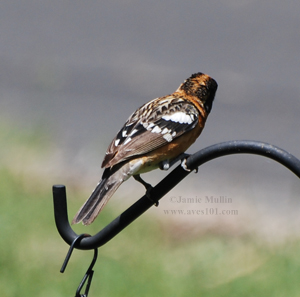 |
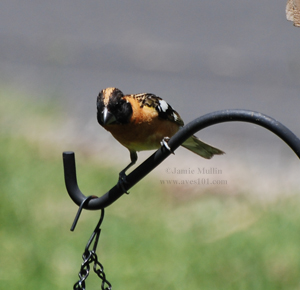 |
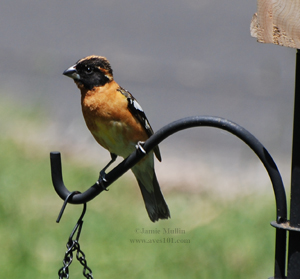 |
 |
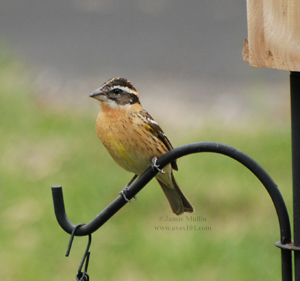 |
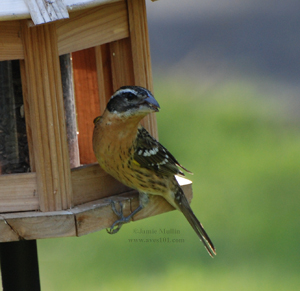 |
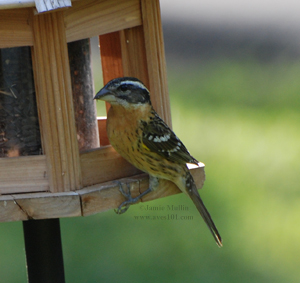 |
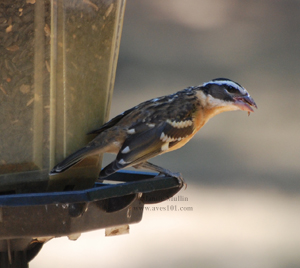 |
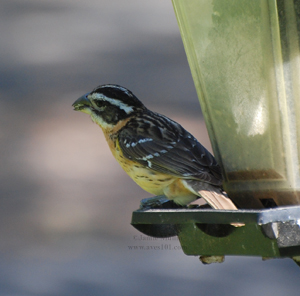 |